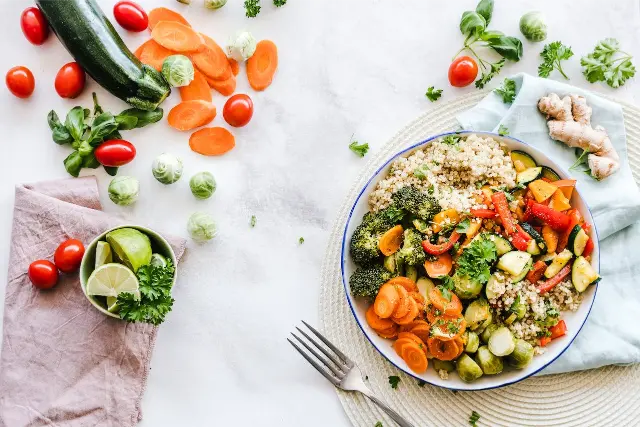Welcome to the delicious world of food blogging! If you’ve ever found yourself passionate about sharing your culinary adventures, recipes, and foodie discoveries with the world, you’re in the right place. Starting a food blog is a fantastic way to turn your love for all things food into a creative and rewarding online venture.
In this guide, we’ll walk you through the step-by-step process of launching your food blog, even if you’re a beginner. From setting up your blog to creating mouthwatering content and building a community of fellow food enthusiasts, we’ve got you covered. Get ready to embark on a journey where your love for food meets the exciting world of blogging.
Let’s dive in and uncover the secrets of how to start a food blog with simplicity and enthusiasm!
Table of Contents
How To Start A Food Blog In 7 Steps
Step 01: Select The Food Blog Niche And Name
Before creating a successful food blog, the first step is to select what you love and find the specific niche that you will be blogging about. After the niche is chosen, let us work together to discover the best name for your food blog.
Niche For Food Blog
Choosing a niche for your food blog is like picking your favorite dish to cook. Think about what food you love the most—whether it’s baking, healthy recipes, or exploring different cuisines. Your niche is what makes your blog unique. Just focus on what you enjoy, and we’ll help you make your food blog stand out.
Here are a few questions to consider asking yourself when selecting a niche for the food blog.
★ What type of cuisine or cooking style are you most passionate about?
★ Do you enjoy baking, grilling, or experimenting with different cooking methods?
★ Are there unique aspects of your food journey, like weight loss, that you’d like to share and help others with?
★ Any specific diet preferences, like vegetarian, vegan, or gluten-free?
★ Are you interested in food photography or showcasing your kitchen creations?
Domain Name For Food Blog
The domain name and the blog name must be always the same. The domain name is the unique web address of your blog when people type it on their browser it will show your content on your blog. Example of a domain name (www.YourBlogName.com)
Here are a few things to consider when choosing a domain name
Reflect Your Niche: When selecting a domain name, consider your food blog’s theme. If you specialize in baking, cooking with specific ingredients, or exploring a particular cuisine, try to include relevant words in your domain. This instantly communicates to visitors what your blog is all about.
Short and Sweet: Keep your domain name short and sweet. Short names are easy to remember and type, reducing the likelihood of visitors making spelling mistakes. Aim for a concise name and to the point.
Easy to Spell: Ensure your domain name is easy to spell. Avoid complex words or unusual spellings that might confuse your audience. A straightforward, correctly spelled name makes it effortless for people to find and share your blog.
Avoid Hyphens and Numbers: Hyphens and numbers can be stumbling blocks. They make your domain name more challenging to communicate verbally and are easily forgotten. Stick to letters to enhance the simplicity and memorability of your domain.
Think Long-Term: Choose a name with staying power. While it might be tempting to opt for a trendy or specific name, consider its potential to grow with your blog. Select a name that can accommodate a range of content and remains relevant as your blog evolves. Think about the long-term vision for your blog and ensure your chosen domain name supports its ongoing development.
Social Media Consistency: Check if the domain name is available on major social media platforms like Instagram, Facebook, and Twitter. Consistency across your blog and social media handles reinforces your brand identity. Users should easily recognize and associate your blog with its social media presence.
Check Availability: Before finalizing your domain name, check its availability. There are various domain registration websites where you can verify if your chosen name is taken or still up for grabs. Securing your domain promptly ensures that it’s exclusively yours.
We recommend using tools like :
★ Domainr- Domainr is your go-to tool for finding the perfect domain name. Simply input your keywords, and Domainr provides suggestions, making it easy to discover distinctive and memorable domain names for your website.
★ Namechk- Namechk makes sure your chosen username is available on social media platforms like Facebook, Instagram, and Twitter. It’s like a quick check to see if your favorite username is free everywhere you want to be online. This helps keep your name consistent across different platforms, so people can easily find and recognize it.
Here are some inspirations for food blog domain names:
★ Tasty Voyages
★ Spice Storybook
★ Baker’s Paradise
★ Tasty Capture
★ Cookbook Insider
Step 02: Select The Platform For Blogging
When choosing a blogging platform, consider its user-friendliness, available features, and the strength of its community support. A suitable platform ensures a seamless operation for your blog, delivering an excellent experience for both you and your readers
Here are a few examples of blogging platforms:
★ WordPress.org
★ Medium
★ Wix
★ Squarespace
★ Blogger
Each blogging platform has its advantages and disadvantages. Among them, WordPress.org stands out as the top choice, and we highly recommend it for its overall excellence.
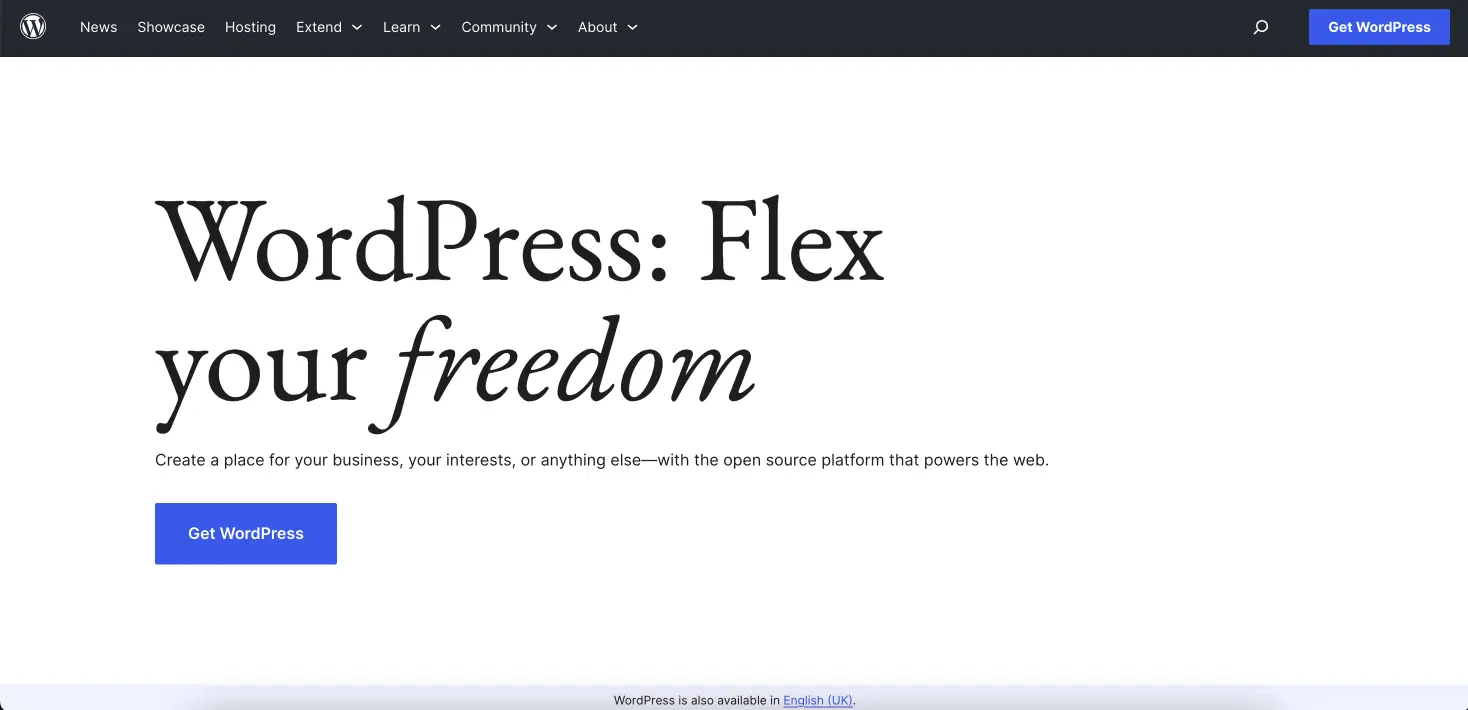
WordPress.org is an excellent option for blogging as it empowers you to personalize your blog, manage every detail, and expand it according to your preferences.
Its user-friendly interface ensures easy navigation, enhances search engine visibility, and offers support from a welcoming community. With continuous improvements and a commitment to security, it provides a dependable and adaptable platform ideal for bloggers, whether they’re beginners or seasoned writers.
Now that WordPress.org has been selected, moving to the next step…
Step 03: Select A Web Host
Now that the blogging platform has been selected, you have to select a web hosting provider who will be hosting and storing relevant website data content such as images, videos, and other relevant files.
Here are a few examples of hosting Providers:
★ HostGator
★ Bluehost
★ Hostinger
★ SiteGround
We recommend HostGator for web hosting because it has features like 1-click WordPress installation, free SSL certificates, 24/7 customer support, and a user-friendly cPanel.

They provide reasonable plans for most bloggers. we recommend using Baby Plan on Hostgator, you can always upgrade as you require over time.
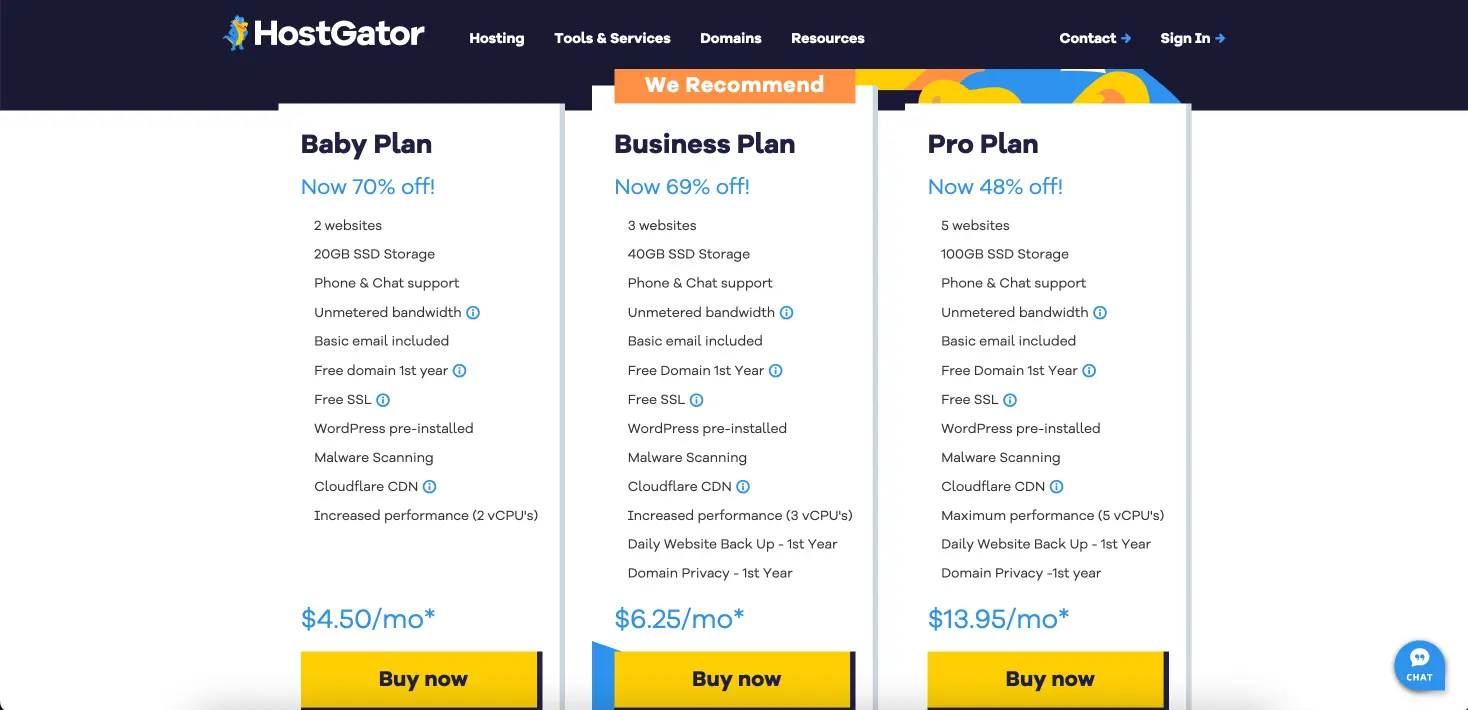
Once you’ve purchased the hosting plan from HostGator, proceed to install WordPress on your website.
Moving to the next step, designing the food blog …
Step 04: Customize Your Blog
Now you have officially a website with the text “Hello World!”. Customize it to match your style and brand by adding your content and personal touches.
Choose A WordPress Theme
Selecting a theme is your first step to giving your website a unique look. WordPress offers a variety of themes, each with its style and features. Find one that suits your content and design preferences.
There will be 5 main options to consider when choosing a theme for your website.
Use Of Free Themes On WordPress
Free themes are readily available on WordPress. They provide a cost-effective solution for beginners on a limited budget. These themes often come with basic features and design options, but they can still offer a visually appealing and functional website.
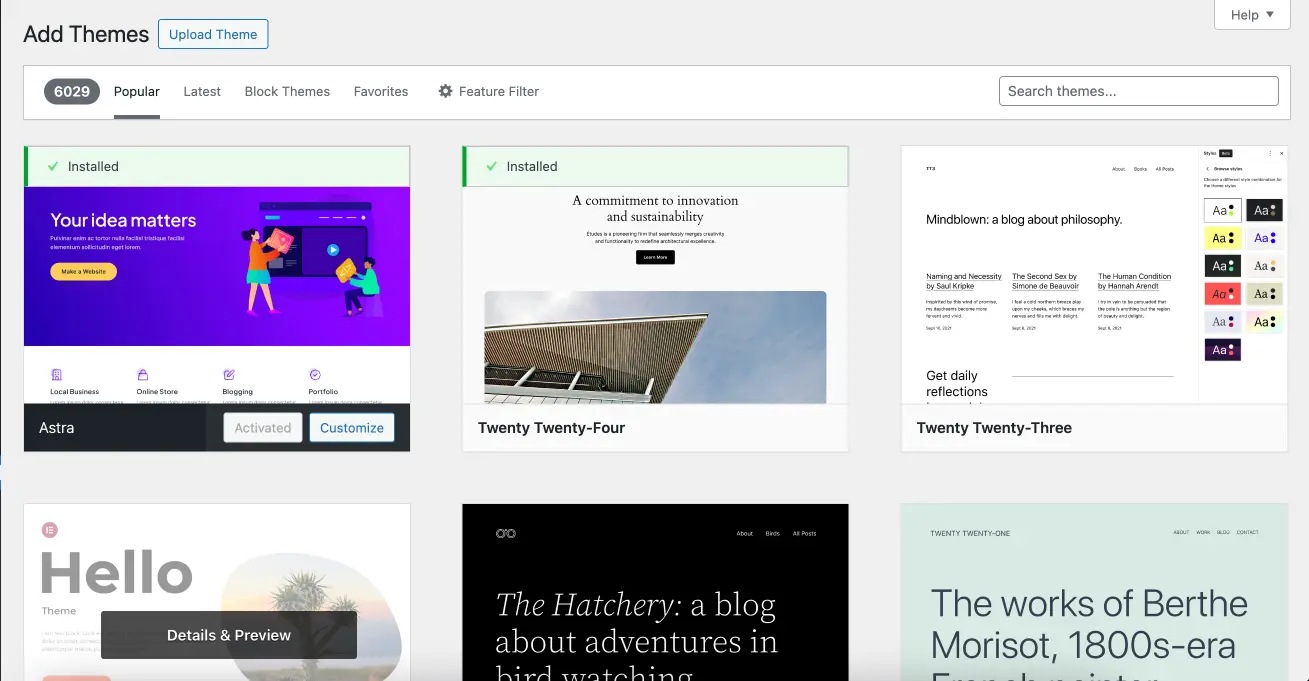
Use Of Premium Themes On WordPress
Premium themes are paid themes that offer more advanced features, customization options, and support compared to free themes. They typically come with a one-time or subscription-based fee.
These themes often have a wider range of designs and layouts to choose from, allowing you to find a theme that aligns closely with your brand and website goals, making it easier to create a professional and unique website.
We recommend using Astra, it is a good start if you are not sure which to start with. This theme has many customizable features and has free starter templates to start with.

Buy A Customized Theme
If you looking to buy a customized theme for the food blog consider looking at Themeforest one of the largest online archives for resources. once you purchased, documentation will be provided to you on the instructions.
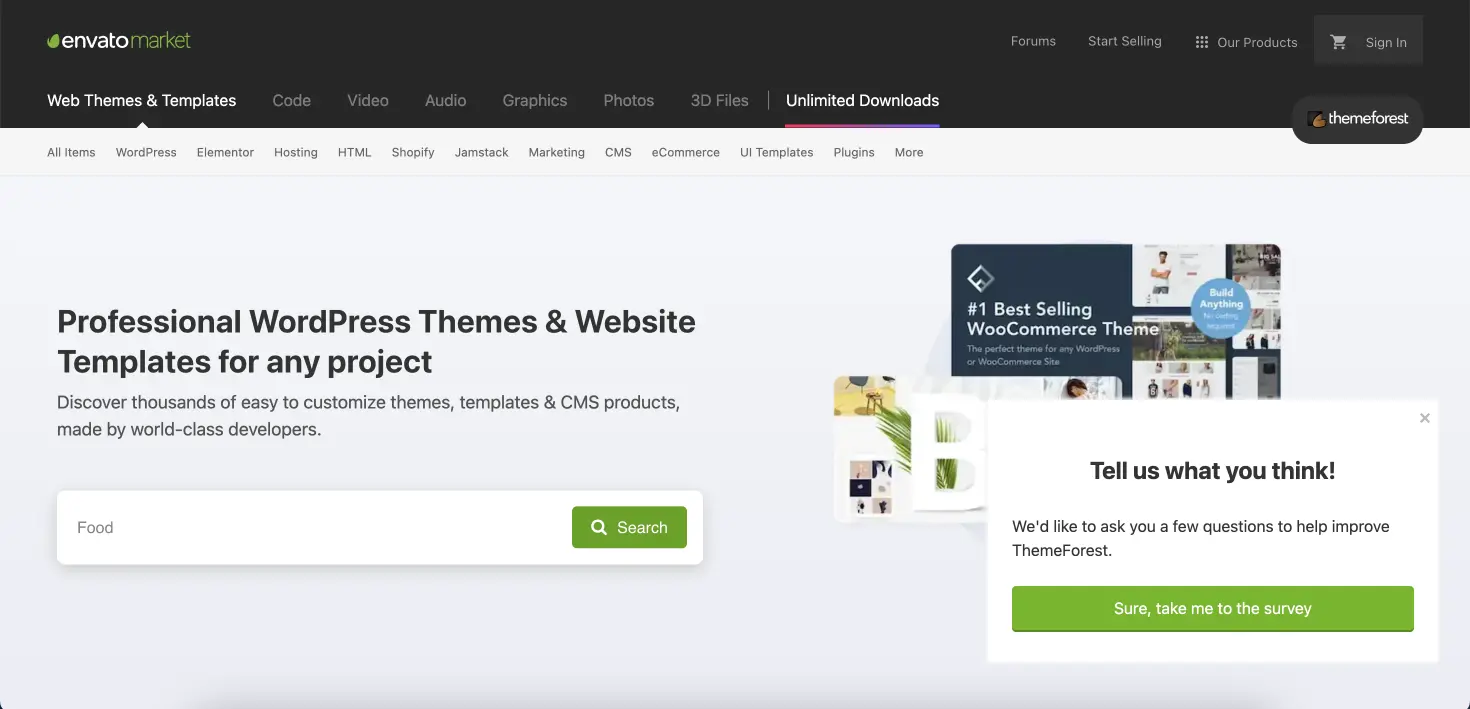
Create Your Theme
With the help of Elementor, you can build your own customized WordPress theme in no time. Using ready-made page templates and popups you can customize using drag and drop option easily.

Use Of Freelance Service
If you are looking to have an originally customized theme for the food blog, you can hire a freelance web designer or developer to have a custom-designed theme for the WordPress. This is an expensive option when considering all the options above, also could take some time.
You can use sites like Fiver, Freelancer, or Upwork to hire professional web designers to have a customized food theme blog.
What To Look In WordPress Theme
User-Friendly: Find a theme that offers built-in design options, so you can easily customize your website without the need for coding. Look for immediate customization features that allow you to change the logo, color scheme, and other basic elements effortlessly.
Compatibility: Ensure that the theme is compatible with the latest version of WordPress. Regular updates are essential to maintain compatibility and security.
Search Engine Optimization (SEO): Choose a theme that is optimized for search results. Look for clean code, proper heading structure, and support for SEO plugins to improve your website’s visibility in search engine rankings.
Mobile-Friendly Design: Make sure it is designed to work well on mobile devices like smartphones and tablets. A mobile-friendly theme automatically adjusts its layout and content to fit different screen sizes. This ensures that your website looks good and is easy to use.
Support And Documentation: Check if the theme comes with reliable support and documentation. A responsive support team and community forums can be valuable resources when you encounter technical issues or need guidance. Good documentation will help you set up and customize the theme effectively.
Install The Relevant Food Blog Plugins
Plugins are like handy tools for your food blog, making it work better and look cooler. They help you show off your recipes, make your site faster, and keep everything safe.
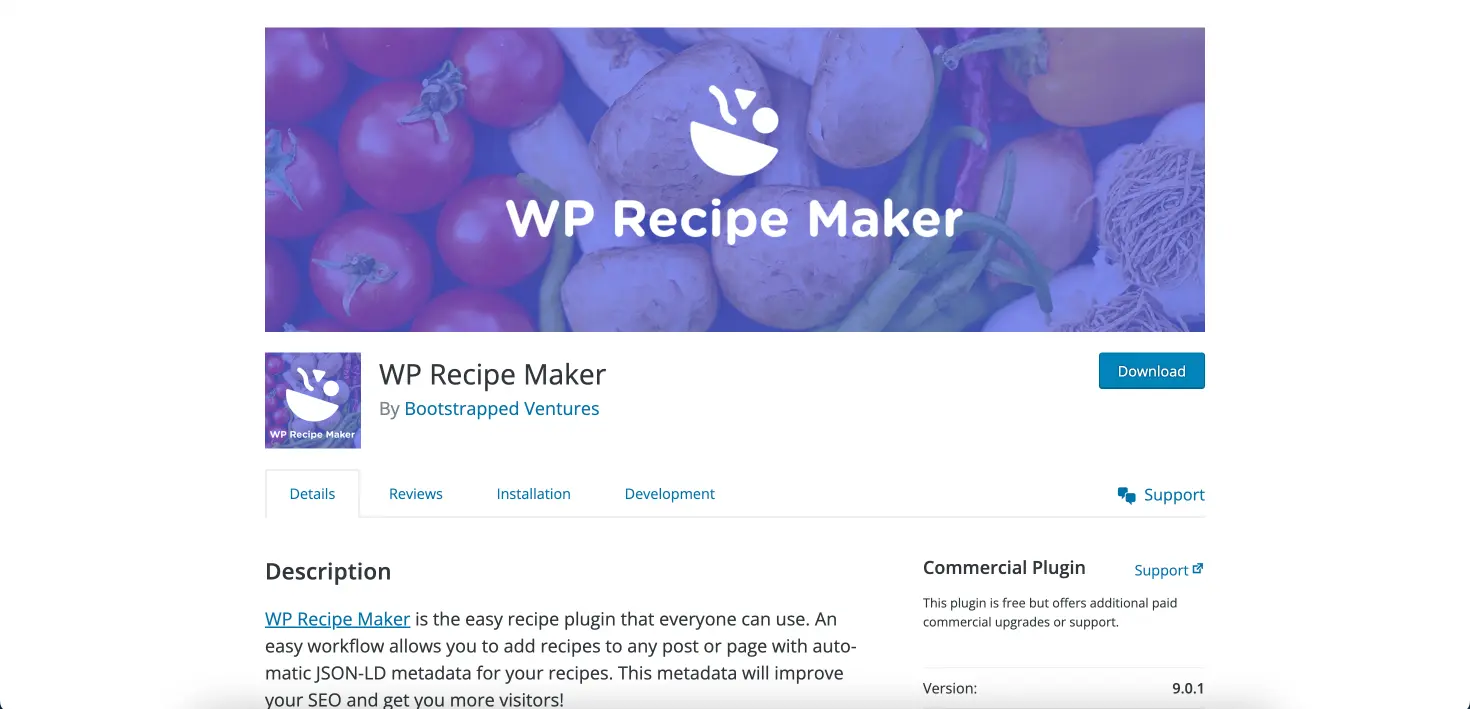
This plugin is used to showcase recipes in a visually appealing and organized manner. This plugin is tailored mainly for food bloggers.
If you are considering using a premium plugin, use a plugin like Nutrifox. This helps to create nutrition labels by pasting the ingredient list and it produces an embedded code that can be embedded on the website.
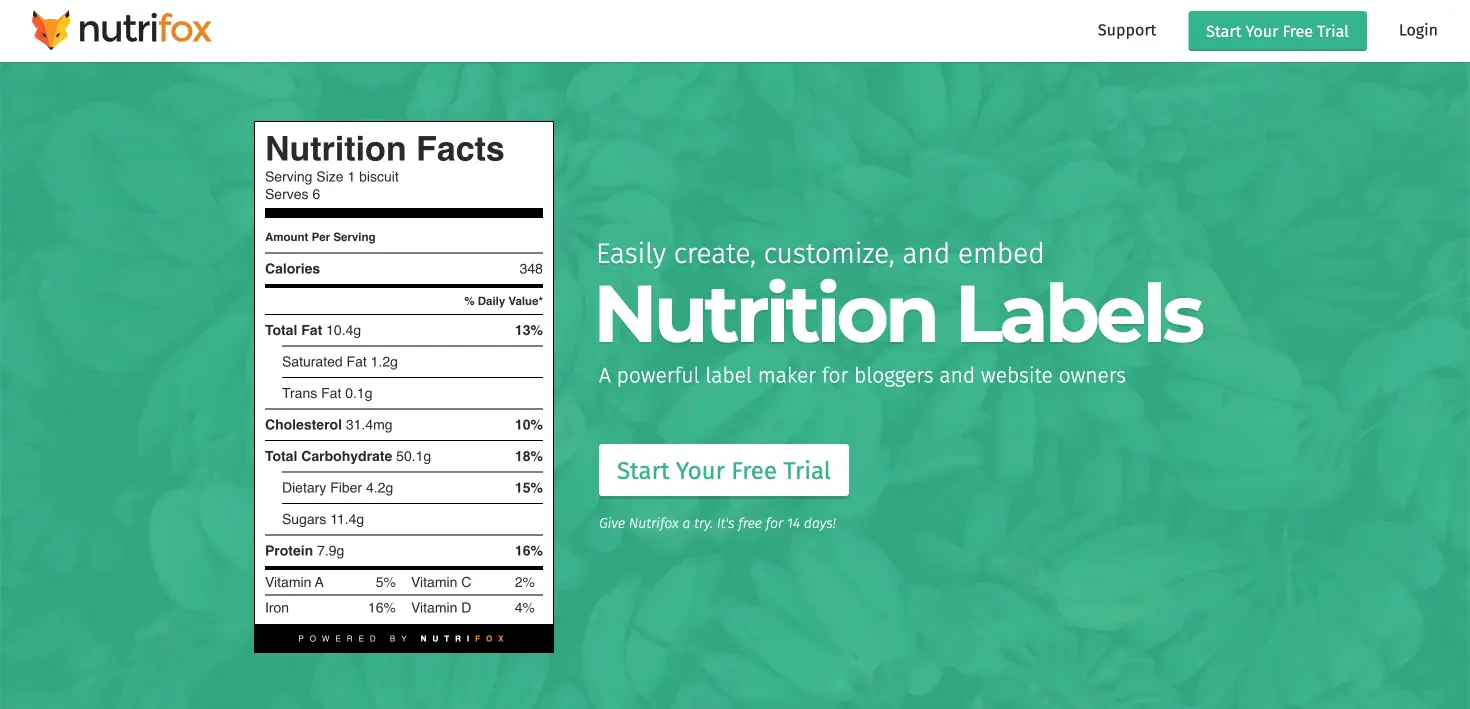
Here are a few other plugins that we recommend when starting a food blog:
01. Elementor- Used as a website builder, which is loaded with pre-created templates.
05. Updraft Plus- This Plugin is used to restore, backup, and migrate WordPress websites.
02. WPForms Lite- This plugin is used to create forms such as contact forms, newsletter signup forms, and many more.
07. Wordfence Security- This plugin is a comprehensive security solution designed specifically for WordPress websites.
03. Rankmath SEO- Makes the website optimized for search engine results which helps to rank.
04. Site Kit By Google- This plugin is by Google itself used to show relevant metrics and data from various Google products.
06. WP Super Cache- This plugin is used to enhance the speed, performance, and overall user experience of WordPress websites.
Step 05: Create The Content And Start Blogging
Now it is time to write content for the blog, you have a website with a good design layout and relevant plugins installed.
Here are key factors to be considered to be successful in blogging
High-Quality Content: Focus on creating valuable, well-researched, engaging content that resonates with your target audience.
Building Relationships: Engage with your readers by responding to comments, emails, and social media interactions. Encourage discussions and create a sense of community around your blog. Building relationships with your audience fosters loyalty and can lead to valuable collaborations or partnerships.
Consistent Posting: Stick to a regular posting schedule to keep your readers engaged and maintain their interest.
Add Visual Elements: Include appropriate and high-quality visuals such as images, infographics, videos, or other visual content to boost the attractiveness and engagement of your blog posts. Visual elements serve to break up text and make your content more likely to be shared.
Keyword Optimization: Incorporate relevant keywords in your blog posts to improve search engine visibility and attract organic traffic.
Post Variety: Offer a diverse range of content types such as informative articles, how-to guides, listicles, interviews, and multimedia content to cater to different reader preferences.
Here are some popular content ideas to write and share about
Recipe Blogs
Recipe blogs are one of the most popular types of food blogs. They focus on sharing detailed recipes, cooking techniques, and tips. These blogs often provide step-by-step instructions and ingredient lists, and sometimes include personal anecdotes or stories behind the recipes.
Recipe blogs cater to a wide range of cuisines, dietary preferences, and skill levels, making them accessible to novice and experienced home cooks alike. They may also feature variations of classic recipes, seasonal dishes, or innovative creations to inspire readers in their culinary works.
Baking and Dessert Blogs
Baking and dessert blogs specialize in sharing sweet treats, cakes, pastries, cookies, and other baked goods. These blogs often provide detailed recipes with precise measurements, baking techniques, decorating ideas, and troubleshooting tips.
Baking enthusiasts and those with a sweet tooth turn to these blogs for inspiration, whether they’re looking to master the art of bread-making, create stunning cakes, or experiment with unique flavor combinations. Baking and dessert blogs often showcase beautiful photography to highlight the visual appeal of their creations.
Restaurant and Food Reviews
Blogs that focus on restaurant and food reviews offer valuable insights and recommendations on dining experiences, local eateries, and food products. They may feature in-depth reviews of restaurants, cafes, food trucks, or specific food products.
These blogs provide readers with an understanding of the ambiance, quality of service, and the taste and presentation of the food. They often include personal opinions, ratings, and recommendations to help readers make informed decisions about where to dine or what products to try.
Food Photography and Styling Blogs
Food photography and styling blogs specialize in the art of capturing visually appealing images of food. These blogs provide tips, tutorials, and inspiration for food photographers and stylists to create stunning visuals.
They cover topics such as lighting techniques, composition, prop selection, and editing tips. Food photography and styling blogs often showcase breathtaking images of various dishes, highlighting the importance of presentation and aesthetics in the culinary world.
Cooking Techniques and Tips
Blogs focusing on cooking techniques and tips aim to teach readers essential culinary skills and provide helpful kitchen tips. These blogs cover a wide range of topics, including knife skills, meal planning, time-saving techniques, and specific cooking methods such as grilling, sous vide, or pressure cooking.
They may also offer guidance on ingredient substitutions, flavor pairings, and troubleshooting common cooking challenges. Cooking techniques and tips blogs empower readers to become more confident and efficient in the kitchen.
Food and Travel Blogs
Food and travel blogs combine the love for food and exploration. These blogs showcase culinary experiences from different destinations around the world. They feature local cuisines, street food adventures, restaurant recommendations, and travel guides.
Food and travel bloggers share their personal experiences, highlighting the flavors, ingredients, and food culture of various regions. These blogs not only provide readers with recommendations for dining while traveling but also serve as a source of inspiration to try new cuisines and broaden their culinary horizons.
The important thing is to discover your special style in the world of food blogging and offer useful content that connects with your intended readers.
Step 06: Promote Your Food Blog And Build An Audience
Promoting your food blog and building an audience is vital for increasing visibility, establishing trust, engaging with readers, and connecting with fellow food enthusiasts. It helps more people discover your blog, trust your expertise, and build a community around your shared love for food.
Search Engine Optimization
Search Engine Optimization (SEO) is essential for promoting your food blog. By optimizing your content with relevant keywords and implementing SEO best practices, you can improve your blog’s visibility in search engine results. This helps attract more organic traffic, reach a wider audience, and establish your blog as a trusted source for food-related information. SEO plays a vital role in effectively promoting and growing your food blog’s online presence.
Email Marketing
Email marketing is a valuable tool for promoting your food blog. By building an email list and sending regular newsletters, you can engage directly with your audience, and share new blog posts, exclusive content, and special offers. It helps drive traffic to your blog, nurture relationships, and foster a loyal community of food enthusiasts. Email marketing is an effective way to promote your food blog and stay connected with your readers.
Social Media Marketing
Social media marketing is essential for promoting your food blog. Platforms like Instagram, Facebook, Twitter, and Pinterest enable you to reach a wide audience of food enthusiasts. By sharing enticing content, engaging with followers, and building a community, you can drive traffic to your blog and connect with a dedicated audience passionate about food. Social media is a powerful tool to effectively promote your food blog and increase its visibility.
Food Forums and Communities
Food forums and communities offer valuable opportunities for promoting your food blog. By actively engaging with like-minded food enthusiasts, sharing insights, and participating in discussions, you can establish credibility and drive traffic to your blog. These platforms provide a targeted audience actively seeking culinary inspiration, making them an effective avenue for promoting your food blog.
Step 07: Monetize Your Food Blog
After so much effort you have got a professional food blog that is ready to earn. Here are the ways to monetize your food blog:
Affiliate Marketing
Affiliate marketing is a powerful way to monetize your food blog. By partnering with relevant brands and companies, you can earn a commission for promoting their products or services. As a food blogger, you can recommend kitchen gadgets, cooking tools, ingredients, or even meal delivery services to your audience.
By including affiliate links within your blog posts or through banners and ads, you can earn a commission when your readers purchase through those links. Affiliate marketing allows you to monetize your food blog while providing valuable recommendations to your audience, creating a win-win situation for both you and your readers.
Here are a few food-related affiliate programs you might want to consider joining:
★ Zwilling – high-end culinary tools and equipment.
★ Snake River Farms- for premium-grade meat conveniently delivered to your doorstep.
★ CampChef.com- for cookware designed for outdoor cooking.
Ads Revenue
Ads revenue is a significant source of income for food bloggers. By displaying advertisements on your food blog, you can earn money based on the number of ad impressions or clicks generated by your audience. Ads can be placed strategically within your blog posts, sidebar, or header/footer sections.
Platforms like Google AdSense and ad networks offer options for displaying relevant ads that align with your content and target audience. As your blog traffic grows, so does the potential for increased ad revenue. Incorporating ads into your food blog allows you to monetize your content and generate income while providing valuable content to your readers.
Here are a few recommended Ad Networks other than Google Adsense :
★ Mediavine
★ Ezoic
★ Adsterra
★ PropellerAds
★ Media.net
Sponsored Content
Sponsored content is a valuable avenue for monetizing your food blog. Brands and companies may approach you to create sponsored posts or collaborations, where you promote their products or services in exchange for compensation.
These partnerships can be a win-win situation, as you can provide authentic and engaging content to your audience while earning income. Sponsored content allows you to showcase relevant products, share personal experiences, and provide valuable recommendations to your readers.
By establishing partnerships with brands that align with your blog’s niche and values, you can create sponsored content that resonates with your audience and helps generate revenue for your food blog.
Sell Merchandise
Selling merchandise is a great way to make money from your food blog. By creating and selling branded products like t-shirts, aprons, or recipe books, you can earn extra income. Your loyal audience can show their support by purchasing your merchandise and proudly displaying it.
Setting up an online store or using print-on-demand services makes it easy to handle orders and shipping. Selling merchandise not only brings in money but also helps build your brand and strengthen the connection with your followers.
It’s a wonderful opportunity to capitalize on your blog’s popularity and offer products that your food-loving audience will enjoy.
Build A Membership Program
Building a membership program is a valuable way to generate revenue from your food blog. By offering exclusive content, resources, or perks to members who subscribe for a recurring fee, you can create a sustainable income stream.
Membership programs allow you to provide premium content, such as advanced recipes, cooking tutorials, meal plans, or access to a community forum. This creates a sense of exclusivity and value for your dedicated audience. Additionally, it fosters a loyal community of food enthusiasts who are willing to invest in the unique benefits and experiences your membership program offers.
Building a membership program not only helps monetize your food blog but also deepens engagement with your audience and provides ongoing support for your content creation efforts.
Publish And Sell Your Cookbooks
Publishing and selling your cookbooks is a great way to make money from your food blog. By sharing your unique recipes and knowledge, you can create a physical product that people can buy. Platforms like self-publishing websites and online marketplaces make it easy to create and sell your cookbooks.
Promoting your cookbook on your blog, social media, and email newsletters helps attract buyers and increase your earnings. Selling your cookbooks not only brings in money but also establishes you as an expert in the cooking world.
It allows your audience to have your recipes in their kitchen and strengthens your connection with your loyal followers.
Create A YouTube Channel
Creating a YouTube channel is a fantastic way to monetize your food blog. By sharing cooking tutorials, recipe demonstrations, and food-related content through videos, you can attract a wide audience and generate income. YouTube’s Partner Program allows you to earn money through advertisements displayed on your videos.
You can collaborate with brands for sponsored content or promote your products, such as cookbooks or merchandise, to your YouTube viewers. As your channel grows in popularity and garners more subscribers, your earning potential increases.
Creating a YouTube channel not only provides an additional revenue stream but also enhances your online presence and allows you to connect with a larger community of food enthusiasts.
Sell Digital Products
Selling digital products is a highly effective way to monetize your food blog. By creating and selling digital products such as e-books, meal plans, recipe collections, or online cooking courses, you can generate income while providing valuable resources to your audience. Digital products can be easily delivered and accessed online, eliminating the need for physical inventory or shipping costs.
You can promote and sell your digital products directly through your blog or online platforms. Selling digital products allows you to leverage your expertise, provide in-depth content, and cater to the specific needs and interests of your audience.
It’s a flexible and scalable monetization method that enables you to earn money while sharing your culinary knowledge with your dedicated followers.
Some real examples Of Food Blogs
Smitten Kitchen
Smitten Kitchen, run by Deb Perelman, is a delightful blend of delicious recipes and engaging storytelling. Deb’s approachable style makes cooking seem like a joyous adventure, and her blog is a treasure trove of culinary inspiration for both novice and experienced home cooks.
Pinch of Yum
Lindsay and Bjork Ostrom’s Pinch of Yum is a delightful blend of delicious recipes and transparency about the blogging journey. Through mouthwatering recipes and insightful content, Pinch of Yum offers a behind-the-scenes look at the life of a food blogger.
Sally’s Baking Addiction
Sally McKenney’s Sally’s Baking Addiction is a haven for baking enthusiasts. Known for her meticulous recipes and step-by-step guides, Sally creates a warm and inviting space where readers can explore the joy of baking through a wide array of sweet treats.
In conclusion, starting a food blog is an exciting adventure. Just follow the steps in this guide on how to start a food blog. Defining your niche, creating engaging content, utilizing social media, and exploring monetization options to build a successful food blog. With passion and dedication, you can create a platform that inspires and delights food enthusiasts.
Start your food blog today and embark on a flavorful adventure.

